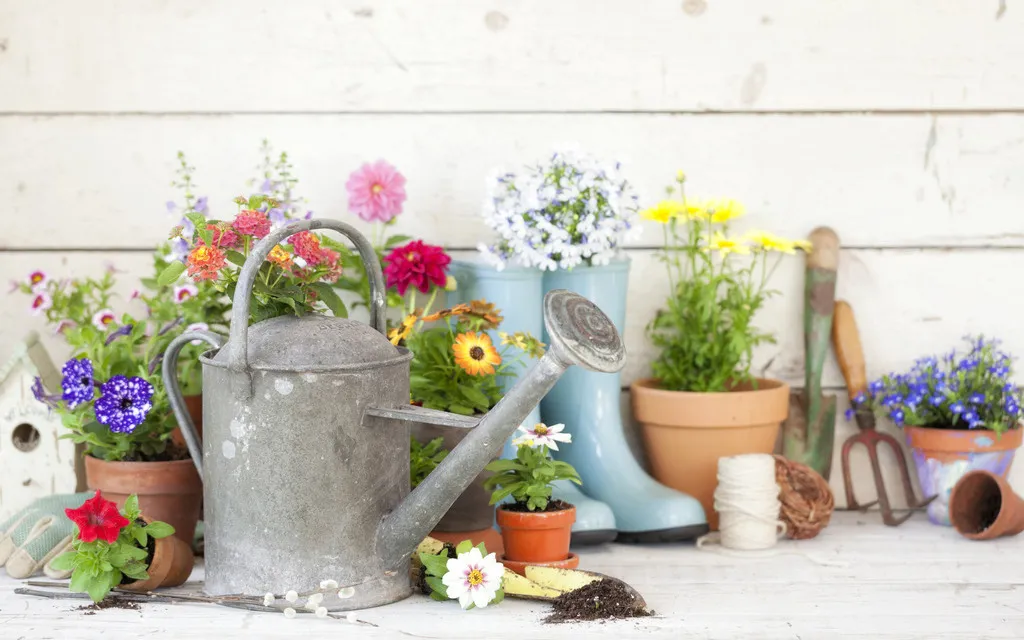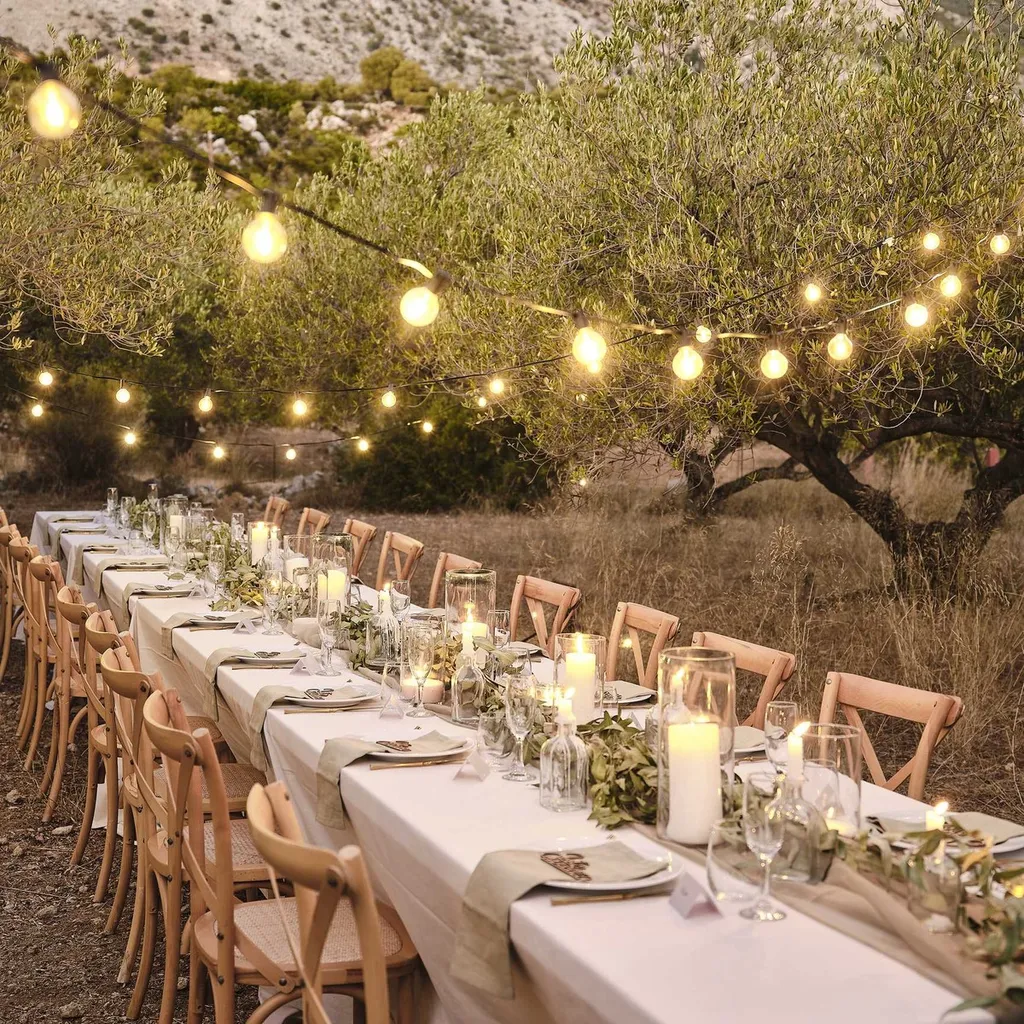Nothing is more irritating that noticing your favourite metal garden furniture is being eaten away by rust. Or perhaps you're put off buying that lovely piece of vintage metal furniture because there's a little too much rust for your liking...
Well, banish those fears right now! With our tried-and-tested tips for how to clean rust from metal furniture you'll never look back. A quick rummage in your kitchen drawers is all you need to find some simple store-cupboard staples that will help you rid your furniture of rust in a jiffy.
What is rust and what causes it?
Rust forms on metal when it’s exposed to oxygen in air and moisture. It turns the surface of the metal an orangey-brown colour and creates a powdery, sometimes pitted, surface.
While rust can degrade the appearance of your furniture, it doesn’t necessarily mean that you need to throw the items away. Removing rust and getting your furniture looking its best again is easier than you think.
How do you prevent rust?
The simplest way to prevent your garden furniture from rusting is to cover and protect it from the elements. Keep metal furniture in a shed or garage, or under good-quality covers, when it's raining.
If it gets caught in the odd shower, dry the furniture as soon as possible with an old, dry towel. A coat of metal paint or clear varnish will also help to protect the surface of the metal against damp conditions.
Use a little WD40 or mineral oil on any moving parts, such as hinges or folding chair legs to keep them rust free and working smoothly.

Looking for more garden inspiration?
You'll be wanting our garden decor ideas then! In this comprehensive round-up, you'll find everything from making a tranquil rock garden to laying a garden path, via updating a folding chair with macrame and crocheting a tasselled picnic blanket.

Senior Product Manager at Rust-Oleum, Emma Irving, shares her top tips for keeping metal furniture in good condition…
- The key to maintaining any metal surface is thorough and correct preparation. Before applying any paint product, we’d recommend making sure the surface is thoroughly cleaned using a degreaser. It should be dry and free from contamination – remove any mould or mildew using a specialised mould-killing product.
- If rust has occurred on the metal surface, we’d recommend sanding it back to a glossy surface as much as possible and applying an anti-corrosive primer.
- Abrading (lightly sanding) glossy surfaces and applying a stain-blocking primer allows for a better base for painting.
- Finally, the weather-resistant and water-based Rust-Oleum Garden Paint can be applied as a topcoat (for best results apply two coats). Garden Paint contains a biocide that protects the dried paint film from fungal degradation for up to six years.
How to remove rust from metal furniture
There are a number of ways you can rid your garden furniture of rust – here are our favourites.
Some of these methods are really easy to use, others need a little more elbow grease and tenacity. We recommend trying one or more of the natural rust removal methods first, before bringing in harsh chemicals.
Method 1: Use salt and lemon
A really effective natural way to remove rust from metal surfaces is by using lemon coupled with lots of salt. Salt acts as an abrasive, while the citric acid in lemon creates a chemical reaction that helps remove stubborn rust stains.
Squeeze the juice from a lemon into a bowl, add a generous amount of salt and apply the mixture on the rusty areas. Leave the mixture to work for a few hours, then scrub it off with an abrasive kitchen sponge to bring back the lost shine.
Method 2: Use baking soda
Most of us have a tub of baking soda in the kitchen. But did you know it is very effective at removing rust from metal surfaces?
Simply mix it into a thick paste with water (or hydrogen peroxide for hard rust). Gently apply this acidic solution using a cleaning cloth on the rusty metal surface and leave it to work for about 15-20 minutes.
Next, scrub off the area with wire wool or an abrasive scrubber until the rust particles are removed. You might need to repeat the process a couple of times, depending on how bad the rusting is.
Method 3: Use white vinegar
Thanks to its acidic and antimicrobial properties, vinegar makes a really effective natural cleaning agent. Add a pinch of salt to increase its acidic intensity, and create an even more powerful rust-cleaning solution.
To remove the rust from your furniture, you need to rinse it with vinegar and leave for about 10-15 minutes, then wipe it off along with the dissolved rust using a scrubber and an old rag.
Method 4: Use a potato
Potatoes contain oxalic acid, which can actually dissolve rust. It can also be used to remove dirty brown rust stains from metal furniture. You need to cut a potato in half and add some salt or dish soap to the surface, then rub the spud on the rusty surface to start a chemical reaction that will weaken the rust.
Once you’ve worked over the whole surface of the furniture, you can clean it off with an old rag.
Method 5: Use cola
Did you now that this fizzy drink can be used to remove stubborn rust stains from metal furniture? The carbonation properties of cola make it perfect for dissolving metal oxide. Simply pour the cola on the rusted surface, leave it to work for a few minutes, then rub it clean with a soft cloth or sponge.
Method 6: Use aluminium foil
Aluminium foil can be used to clean rust from iron and stainless/chromed steel. Aluminium reacts with the rust and creates a material that can be scrubbed off easily.
Begin by creating a mixture of salt and water, then dip a scrunched-up aluminium foil ball in the solution and rub it over the rusted surface. This helps to loosen the rust residue. Finally, use a clean cloth to wipe away the rusty residue.
Method 7: Use a mild cleaning agent
One of the easiest ways to get rid of rust is to catch it early and wipe the early signs of wear before they become a threat.
All you need is a cleaning agent that’s suitable for metal surfaces and an old rag. Spray it directly or use a cloth to gently apply the agent on the rusty surface. Now wipe the entire surface thoroughly with the cloth.
The rust stains will begin to turn brownish-red and will slowly come off with continuous rubbing. Wipe off the wet areas with a clean, dry cloth to remove any moisture.
Method 8: Use an abrasive, such as steel wool
Using a wire brush or piece of steel wool, lightly scrub the affected area to remove rust flakes. If your garden furniture is painted, you’ll need to be extra careful not to accidentally remove the paint in the process. (Although, if the rust problem is vary bad, you might need to strip the paint off completely and get back to the bare metal before repainting it).
Method 9: Use a commercial rust remover
If your furniture is particularly rusty, you might need to resort to a commercial rust remover from a DIY store. Because these are heavily chemical-based they can be really effective at removing rust, although you’ll want to take the appropriate safety precautions when using them, such as wearing gloves and goggles. The application method varies from product to product, so make sure you follow the manufacturer’s instructions closely to avoid damaging the surface of your furniture.
Depending on how badly rusted your furniture is, removing the rust can be a fairly quick and straightforward job, although some methods require a little more elbow grease and patience than others. We recommend trying one or more of the natural rust removal methods.
This article first appeared in YourHomeStyle and HomeStyle magazine.
Discover how to remove rust from metal furniture and give it a new lease of life
Unless you find the patina of rust attractive (and, believe us, a lot of people do!) It can be all too easy to consign a rusty piece of furniture to the scrap heap. But there's no need and no excuse when armed with this comprehensive list of remedies.
Regardless of the level of rust you have, it's best to try the natural solutions we've listed first before reaching for harsh chemicals. Then once your furniture is free from rust, you can paint it with special metal paint for a smart, weather-proof finish.
Put your garden in the spotlight with layered lighting
Once your outdoor furniture is looking smart, you'll be wanting to spend as much time as possible in your garden. Make sure you're able to enjoy your space for as long as you can after sundown with practical and pretty lighting.
We've rounded up 18 outdoor lighting ideas, all of which can be mixed and matched to create a haven that sings. From vintage-style bulbs to wicker animals, festoons to rope lights, you'll be spoilt for choice!

